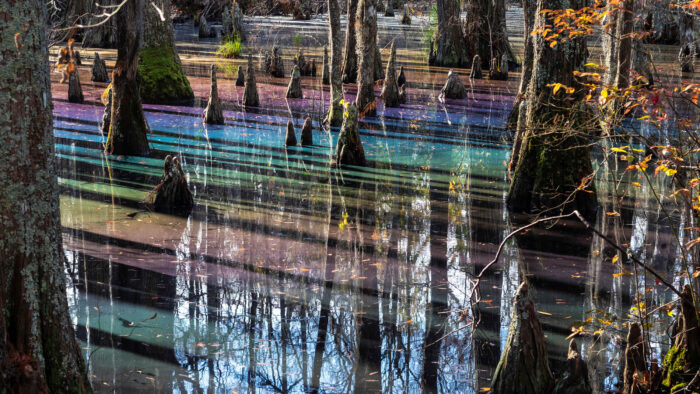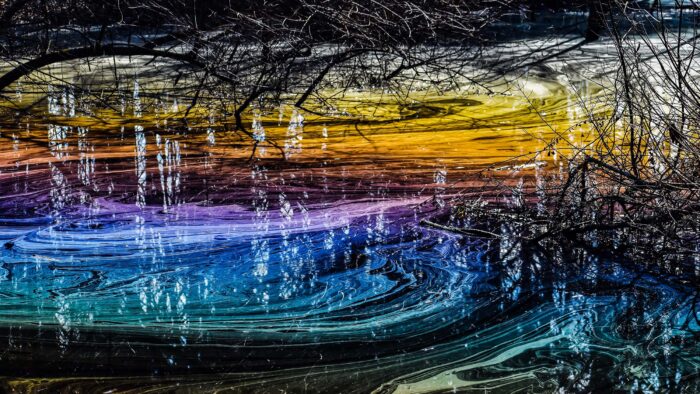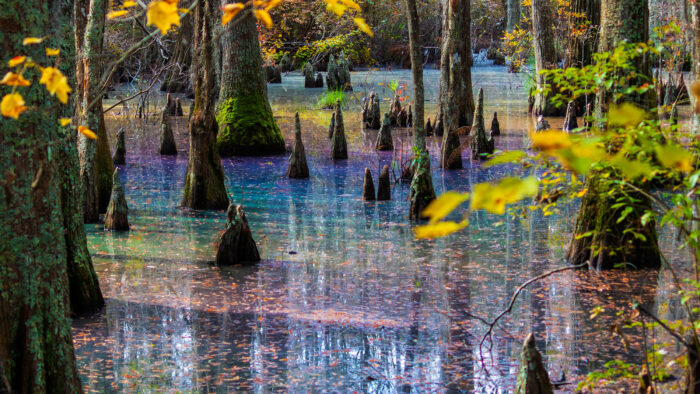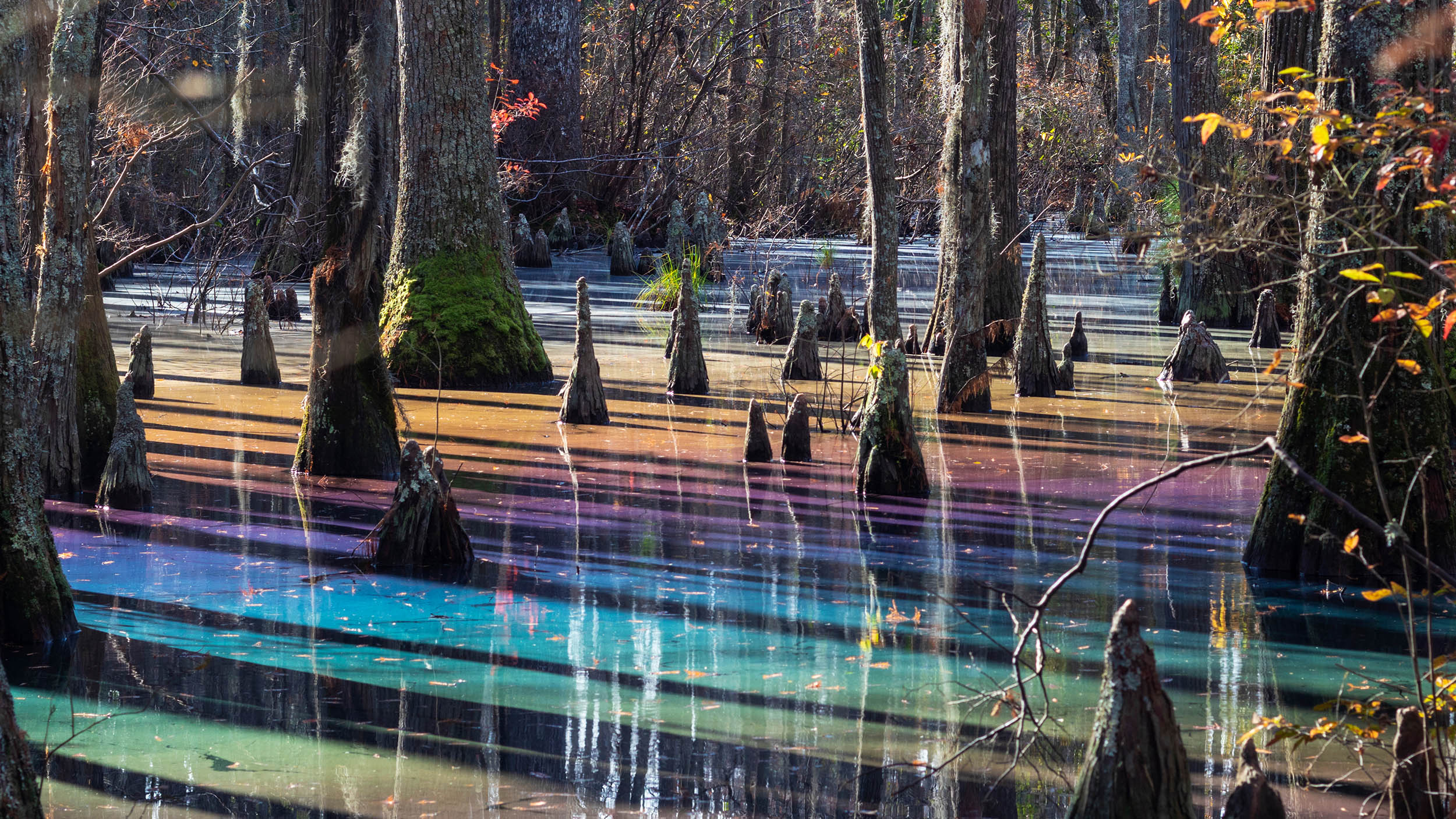Swamps and wetlands get a bad rap, and not without reason. They can be difficult to navigate, play home to various venomous and tooth-filled creatures, and often serve as breeding grounds for one of humanity’s most vicious enemies — the humble mosquito.
The first English settlers in Virginia found this out the hard way. When the Virginia Company, under the leadership of John Smith, founded the first permanent English settlement in the New World in 1607, they landed in a swampy spot not far from present-day Virginia Beach. Realizing that the area wouldn’t suit the colony’s needs fairly quickly, Smith and company relocated inland to a (somewhat) dryer spot they dubbed Jamestown.
But swamps are important. They filter water, provide buffers to flooding and erosion, and serve an important ecological niche.
They can also be stunningly beautiful, sometimes in surprising ways. The wetland where Smith and his soon-to-be-struggling colony first touched North American soil is now called First Landing. It’s an unassuming little state park within the urban boundaries of Virginia Beach.
But a few times a year, something astonishing happens when the light is just right. The tannin-filled water lights up with a stunning display of rainbow striations.

The rainbow swamp in First Landing State Park, Virginia Beach, Virginia. Photo: Shutterstock
“Magical” is probably the best word for it.
A chance viewing
Photographer Katherine Scott is lucky enough to have seen this natural wonder. In December 2018, Scott was hiking in First Landing with her camera. She spent the bulk of her day photographing the park’s flora and fauna before turning around and heading for her car.
“As I turned off Bald Cypress [trail], I stopped short. The cypress swamp that just seconds before had been its usual dark, murky self was magically, suddenly transformed by sunlight,” Scott wrote in a blog post on First Landing’s website.

It takes the right combination of factors, chemical, biological, and astronomical, to create this effect. Photo: Shutterstock
“There it was. Instead of old black water, a new rainbow of color. Across the still expanse of the swamp, reds, oranges, yellows, greens, blues, and purples were spread smoothly. The calm, colorful water was punctuated by cypress knees and long shadows, which somehow only enhanced the overall scene,” she continued.
Thanks, cypress trees!
It takes a combination of factors to create a rainbow swamp.
Have you ever been walking across a concrete parking lot late in the afternoon, stepped over a puddle, and stopped to marvel at the rainbow sheen sparkling across the top of the water?
Those colors are created by a thin film of oil floating on the puddle’s surface and refracting the sunlight.
The same phenomenon is at play at First Landing and in various wetlands across the American South.

Rainbow swamps occur all over the American South. This one is in Alabama. Photo: Shutterstock
The keystone flora in these wetlands is the cypress tree, a plant that is spectacularly well-adapted to soggy environments. Cypress trees can grow right up out of the water thanks to modified root structures called “knees” that they send up above the murky surface. Cypress trees also produce an oil that saturates their wood, bark, and needles.
Cypress trees are abundant in southern swamps. As evergreens, they produce needles year-round. As the needles age and fall into the water, the oils leach out and coat the swamp’s surface.
But if that’s all it took, every swamp in the American South would be a rainbow swamp. According to Jeff Ripple, who formerly led swamp walks in Florida, there’s some microbiology at play as well.
“The rainbow sheens found as a thin film on top of pooled water in swamps and marshes are the result of natural oils released by decaying vegetation or the biological processes of anaerobic bacteria reducing iron in soil,” the naturalist told the BBC.
Finally, it takes unusually quiet weather conditions to produce the effect.
“Movement by sheet flow, current, or wind disturbance would destroy the fragile rainbow film,” Ripple said.
A rare occurrence
And so, unlike natural wonders that rely on geological processes, rainbow swamps are unpredictable and deliciously fleeting. Because of the angle of sunlight needed to create the rainbow effect, late fall and early winter are the best times to see them. But even then, it’s a toss-up.
Retired engineer Michael Hussey owns a swampy patch outside of Tallahassee, Florida, and monitors the waters every year, hoping to catch a glimpse.

Want to see a rainbow swamp? Choose the right time of year and cross your fingers. Photo: Shutterstock
Still, he’s only witnessed the phenomenon a few times in almost half a century.
“I have seen this occur about ten times in the 40 years I have lived here,” he told the BBC. “It’s beautiful to see.”
So, what’s the best way to see a rainbow swamp? You’ve got to spend a lot of time in the swampland of the American South at the right time of year, cross your fingers, and hope for the best.
Might we recommend a multi-month expedition along the 2,400km Florida Trail?





